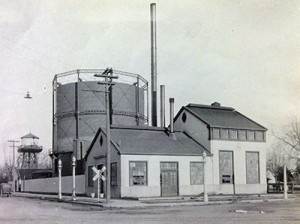The Light and Power Council made life difficult for PG&E in the early days of the strike.
“The strikers are picketing every power house, substation and other properties of the company every hour of the day and night,” the San Francisco Call reported. “There are uniformed police on guard at all the places being picketed.”
PG&E facilities in Oroville, Chico, and Oakland were destroyed—by accident or otherwise. Many arc lights were out in San Francisco and the number was growing daily. Council Secretary W. S. Junkin mobilized “motorcycle pickets” to count the number of lights that were out. This eventually prompted city leaders to reduce payments to PG&E for its failure to deliver the promised level of service.
Motorcycles patrolled the area around PG&E plants, photographing strikebreakers and creating a “rogue’s gallery” that could be used to keep scabs from getting union work in the future.
On the strike’s eighth day, the Council offered General Manager Britton a major concession. The Council was now willing to arbitrate all issues, if PG&E would just recognize the Council as the workers’ sole bargaining representative. Britton refused, and said that he would have no further dealings with the Council.
California Labor Federation President Haggerty, the top statewide labor official, said it was time for all unions to choose sides in this historic struggle:
All organized labor unions should make this fight their own, as it involves fundamental principles upon which all labor is organized. There is no neutral position to assume.”
